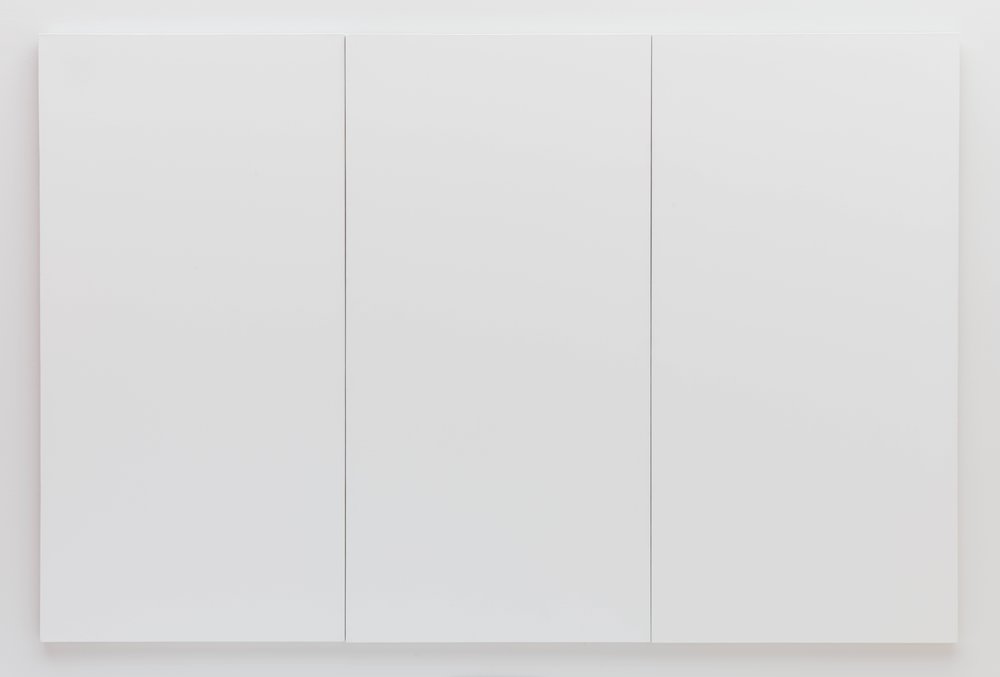
White Paintings (1951) - Originally viewed as a scandalous swindle, Rauschenberg's White Paintings were an early codification of the artistic ideals that dominated his entire oeuvre. The White Paintings currently exist in five different permutations of multi-paneled canvases, which Rauschenberg intentionally left free of any mark of the artist's hand. By removing any gesture, the works could be, and were, re-fabricated by his friends and assistants, including fellow artists from Cy Twombly to Brice Marden.
Erased de Kooning Drawing (1953)- Willem de Kooning was an established, leading figure in the New York art world when the young Rauschenberg asked him for a drawing that he could erase. The absent drawing is presented as an art object, designating the act of erasure as belonging to the realm of fine art - a typically Neo-Dada act of questioning the definition and import of the art object.
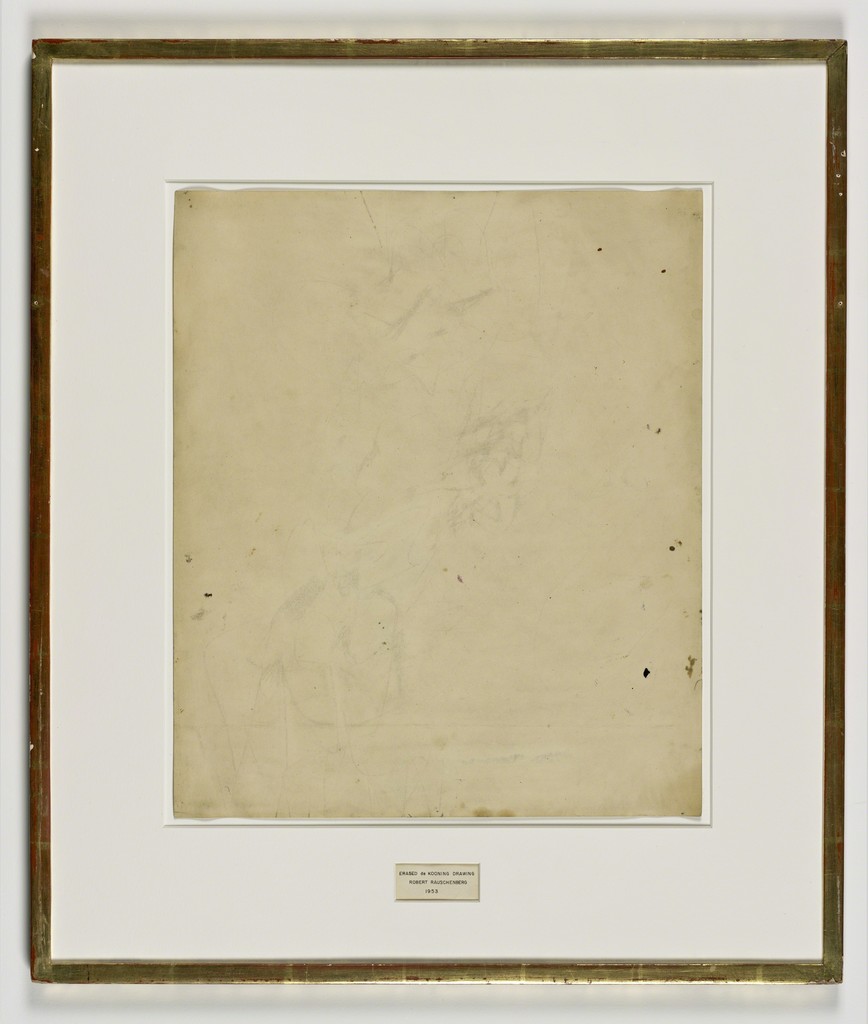
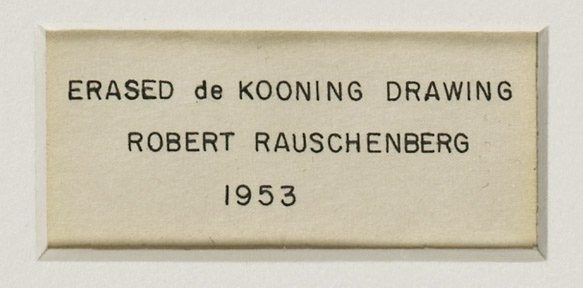
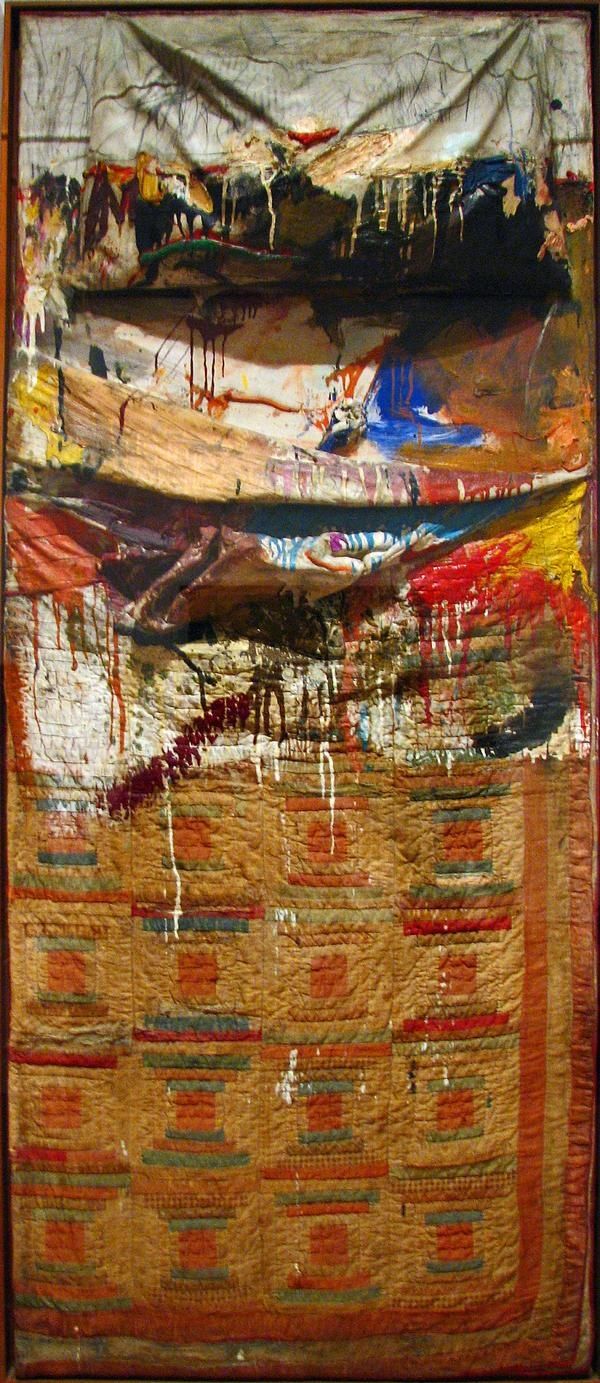
One of Rauschenberg's first "combines," Bed (1955) transcends the line between painting and sculpture through its Dadaist assemblage of traditional materials and the detritus of everyday life. Rauschenberg ran out of canvas and turned instead to his bed linens, first scribbling on the pillow, sheets, and quilt with pencil, then rapidly dripping and spilling paint on them. He then stretched the bed linens over a rectangular wooden support, in the place of a canvas, and attached the pillow and quilt in a way that made it appear as if the bed was made with only one corner un-tucked.
Monogram (1955-50) - In one of his wanderings in the early 1950s,
Rauschenberg found and purchased a stuffed angora goat
from an office supply store and later encircled it with a
tire he encountered in street trash. He applied paint to the
goat's snout in gestural brushstrokes that quoted Abstract Expressionism.
On top of the canvas, Rauschenberg surrounded the goat
with a pasture of more detritus strewn about its hooves -
including a tennis ball, a wooden plank, and several found and reproduced images.
Despite Rauschenberg's insistence against specific meanings
of the work, often critics interpret the tire-ringed goat as
a symbol of the artist's sexuality, as well as his role within
the art world, trampling over tradition with his own artistic monogram.
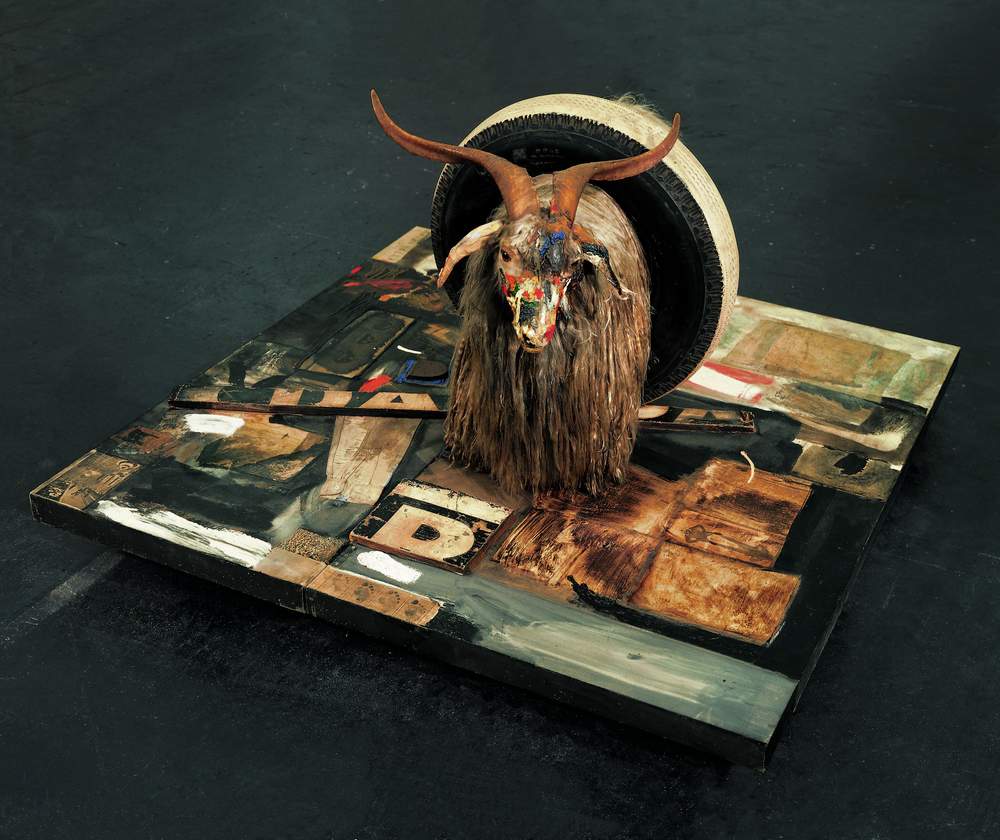
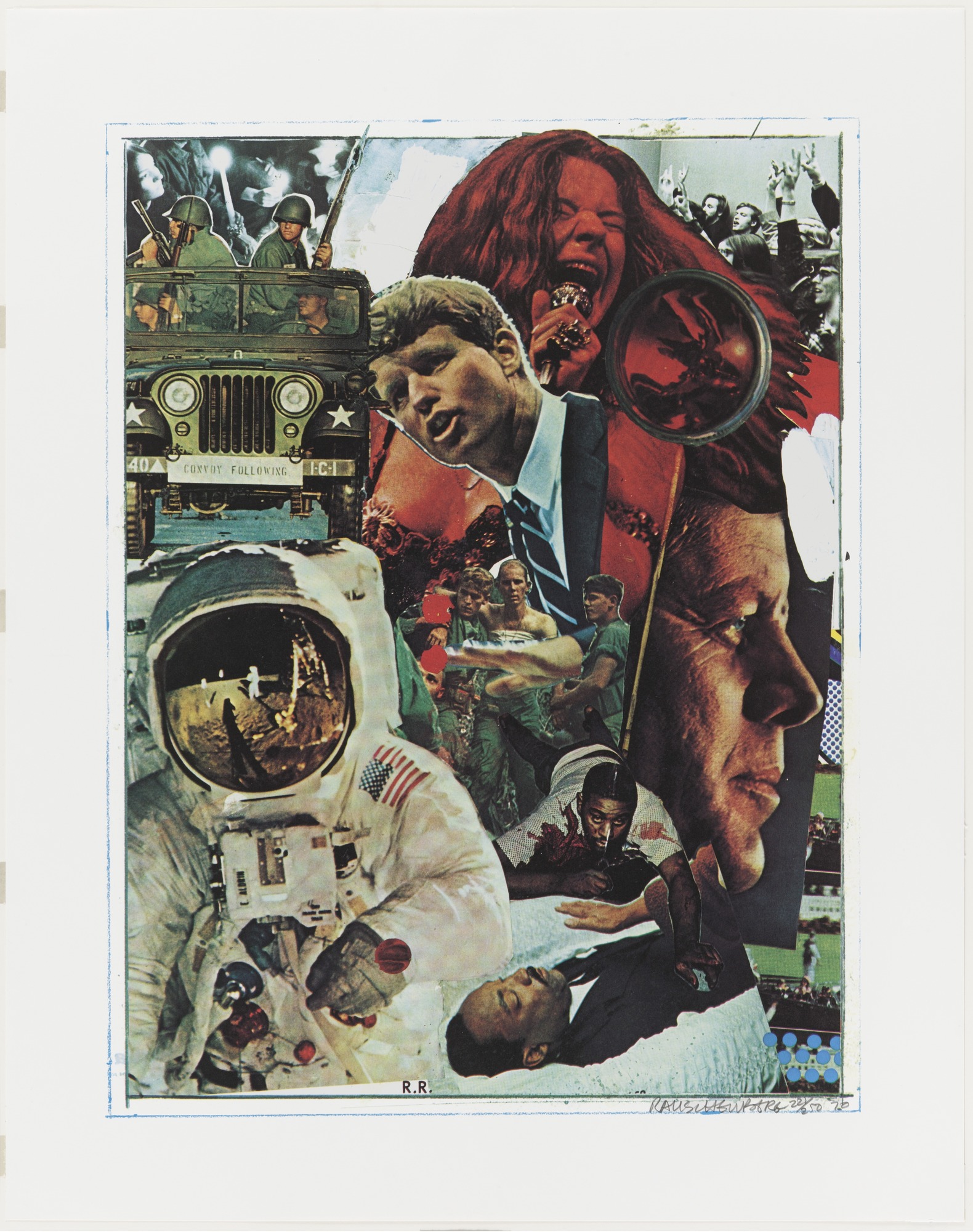
Signs (1970) - Immediately after the turmoil of the 1960s had come to a close, Rauschenberg created this collage summarizing the upheaval of the decade.